An apron for the kitchen is a traditional kitchen garment. If 10 years ago it only served a protective function, now it can be a decoration for the hostess of her kitchen.
The creative idea of the master, the variety of materials, decorative elements allow you to create an exclusive thing. This article tells how to sew an apron, choose the fabric, shows its types and the classic pattern of the apron.
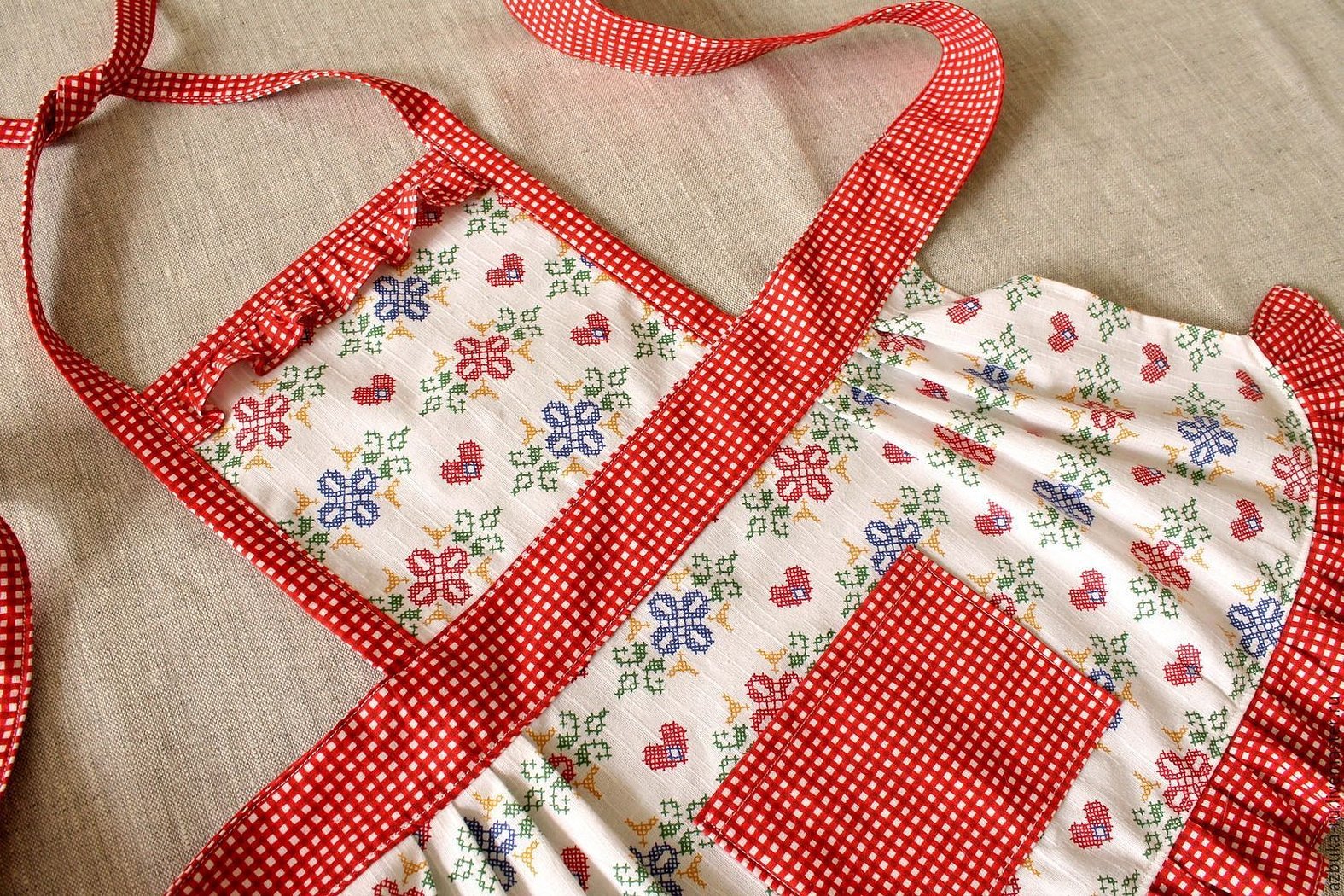
- Types of aprons
- Choosing fabric for sewing an apron
- Construction of the apron pattern
- Instructions on how to sew a kitchen apron
- Aprons with applique for children
- Aprons in a delicate shabby chic style
- Aprons from old jeans
- Elegant aprons for the holidays
- Apron from a men's shirt
- Non-marking polyethylene aprons
Types of aprons
There are two main types of aprons: with and without a bib.
Please note! An apron is a rectangular piece with a stitched belt.
Depending on the cut, aprons can also be simple or complex. Simple ones are classic straight options with or without a bib, made of 4-5 parts, or one-piece. The basis of the apron is a rectangular cut and belt. The closed style consists of a rectangular hem and chest piece, ties, and a belt.
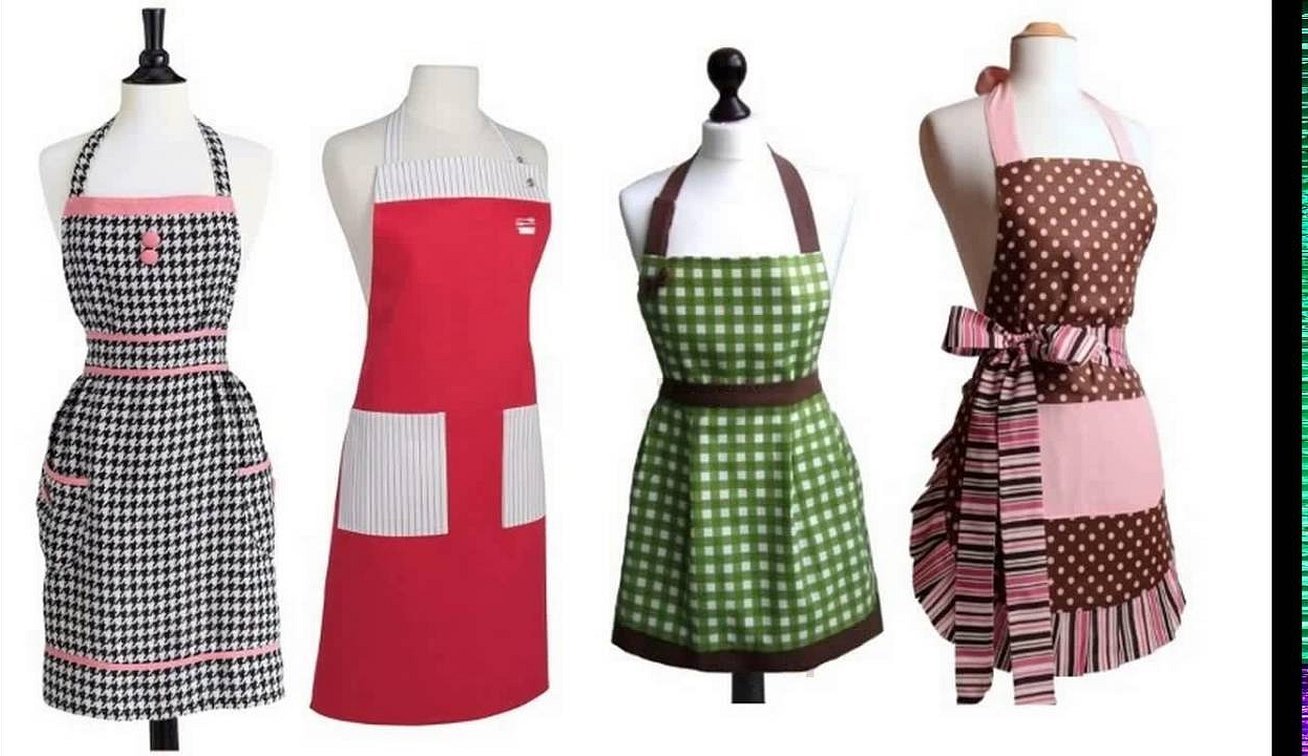
Depending on the cut, the following types of aprons are distinguished:
- with rounded or flared edges;
- hem based on a semicircle;
- sarafan;
- with yoke inserts;
- with flounces, ruffles;
- straight hem, different lengths and widths;
- with pockets in the center of the apron, on the sides or at the bottom;
- with gathered bodice;
- asymmetrical cut.
There are also special design options that are rarely found anywhere:
- knitted, made using the patchwork technique;
- in the style of denim shirts, old dresses;
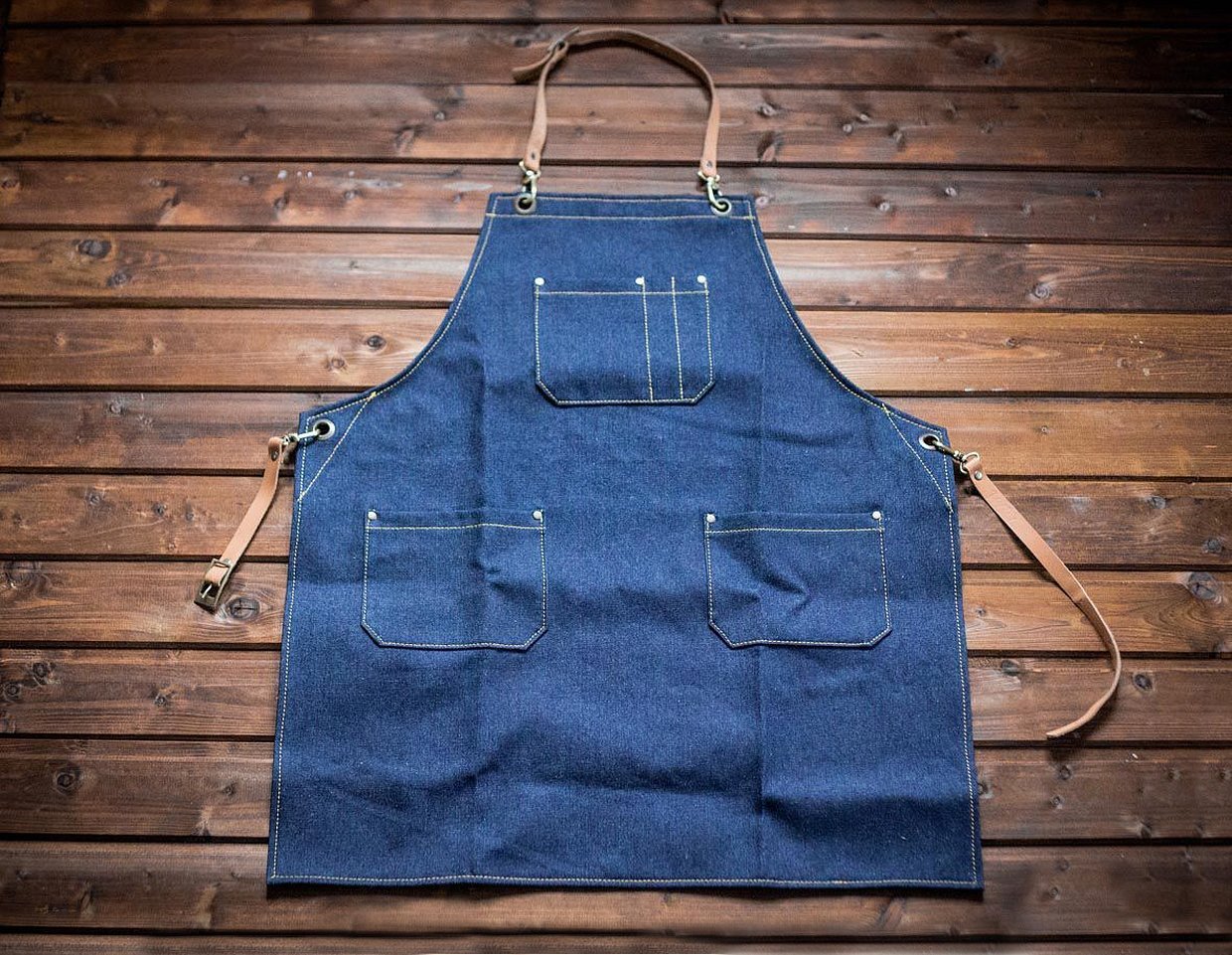
- from a colored scarf;
- made in different stylistic directions;
- decorated with matching or contrasting fabric.
Important! Beginner needlewomen should choose simple straight options with or without a breast. This option will be the easiest for them to make.
Choosing fabric for sewing an apron
Before you start sewing a product, you need to decide on the fabric. Among the many characteristics of textile products, the types of material are the most important. It is on them that the practicality, convenience and durability of the product depends. Three main types of fabric are used for production:
- Mixed fabrics that combine synthetic and natural fibers. Aprons made from such materials are durable. The downside is that they quickly lose their original color and fade when washed.
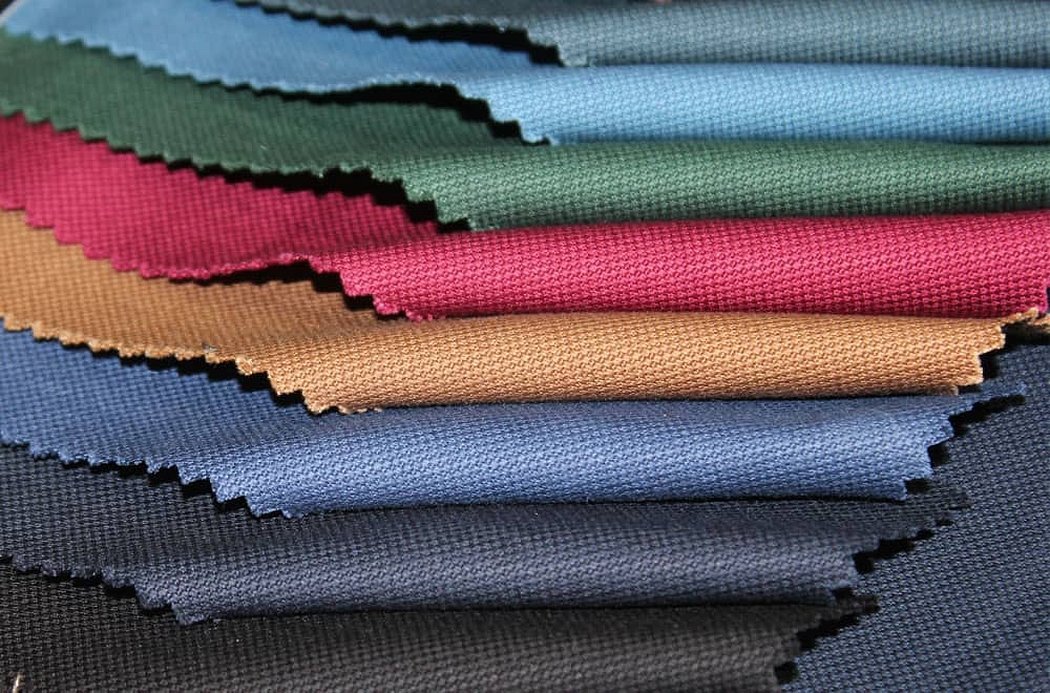
- Natural fabrics such as silk, cotton, wool, linen – products have an excellent appearance and high wear resistance. They wrinkle easily, drying takes a long time.
- Synthetic materials are hypoallergenic, inexpensive and durable. The materials are electrified and do not allow air to pass through well. As a result, a person often feels hot in a product made of synthetic fabric.
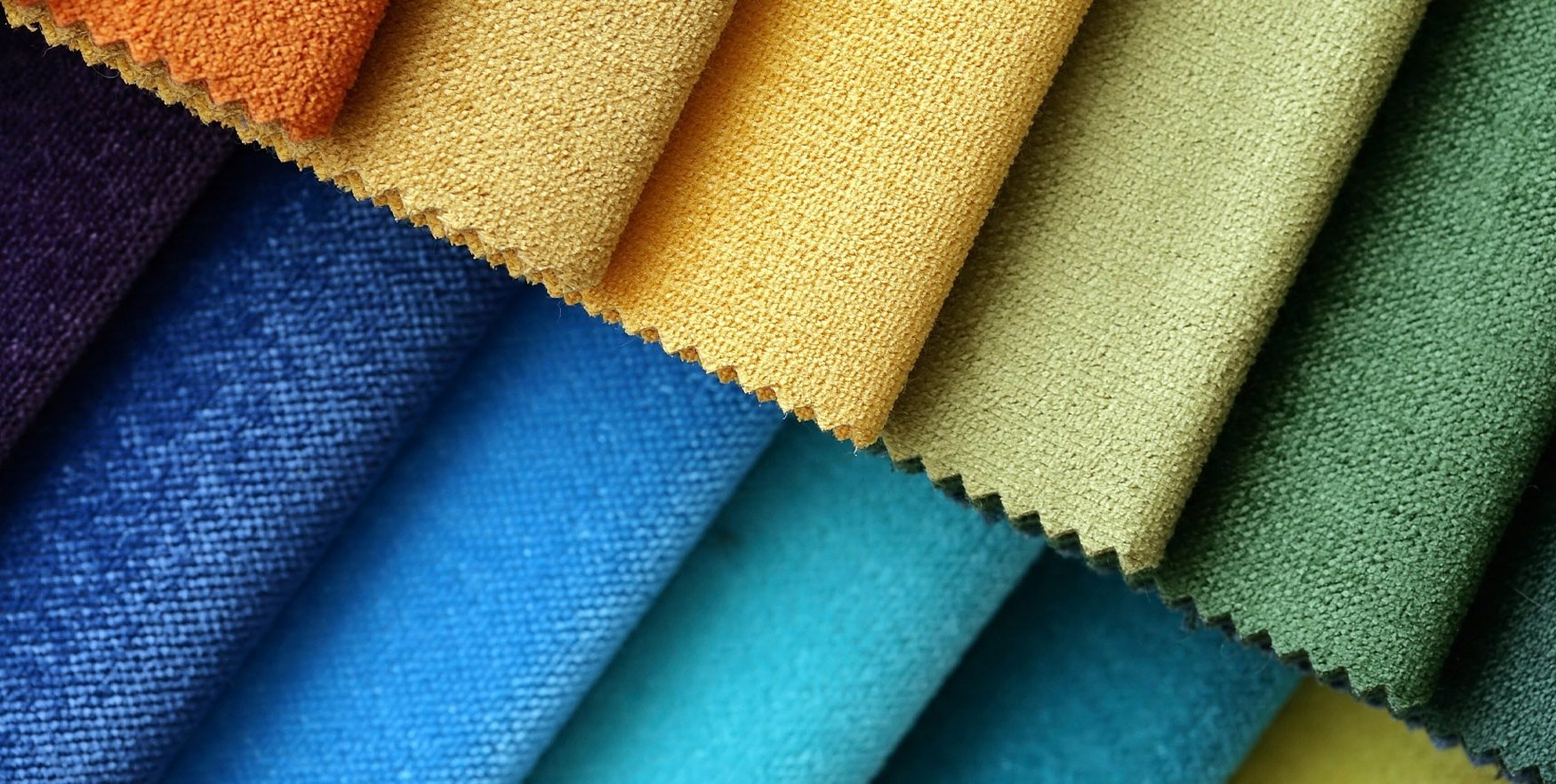
Aprons for chefs in cafes or restaurants are a special case. This element of the uniform must be comfortable and safe, and meet the established requirements. Therefore, aprons for chefs are sewn from high-quality calico with an admixture of polyester. The main characteristics of such material:
- resistance to wear and tear, exposure to washing powders;
- ecological cleanliness;
- low cost;
- high density, strength;
- easy to care for and iron.
The most suitable fabric for cutting a professional apron contains 30% cotton threads, 70% polyester. This option is more expensive than calico, but it has more advantages. The optimal combination ensures resistance to deformation, hygiene. A mandatory condition is a special impregnation that protects against the effects of hot steam, fat, boiling water.
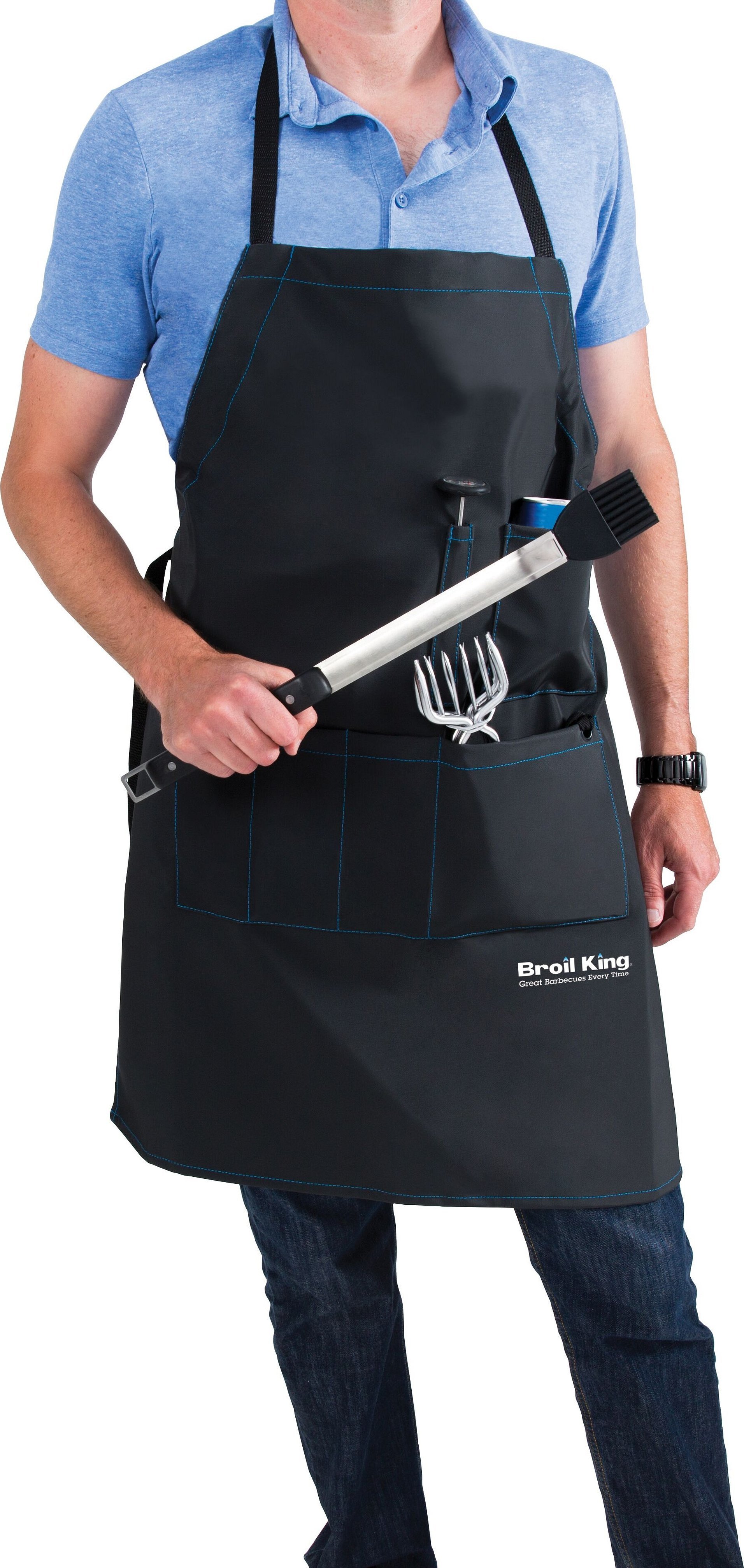
There are not such strict requirements for home accessories as for professional uniforms. And what fabric to choose for an apron, a woman can decide for herself, guided by her own preferences.
Here are the most popular modern options that are well suited for creating a home apron:
- "Diagonal" is a cotton fabric with a small addition of synthetics. Special weaving of threads gives an interesting texture with a rough surface. It has elasticity and high density. Pros - thermoregulation, durability, resistance to deformation, pleasant to the touch.
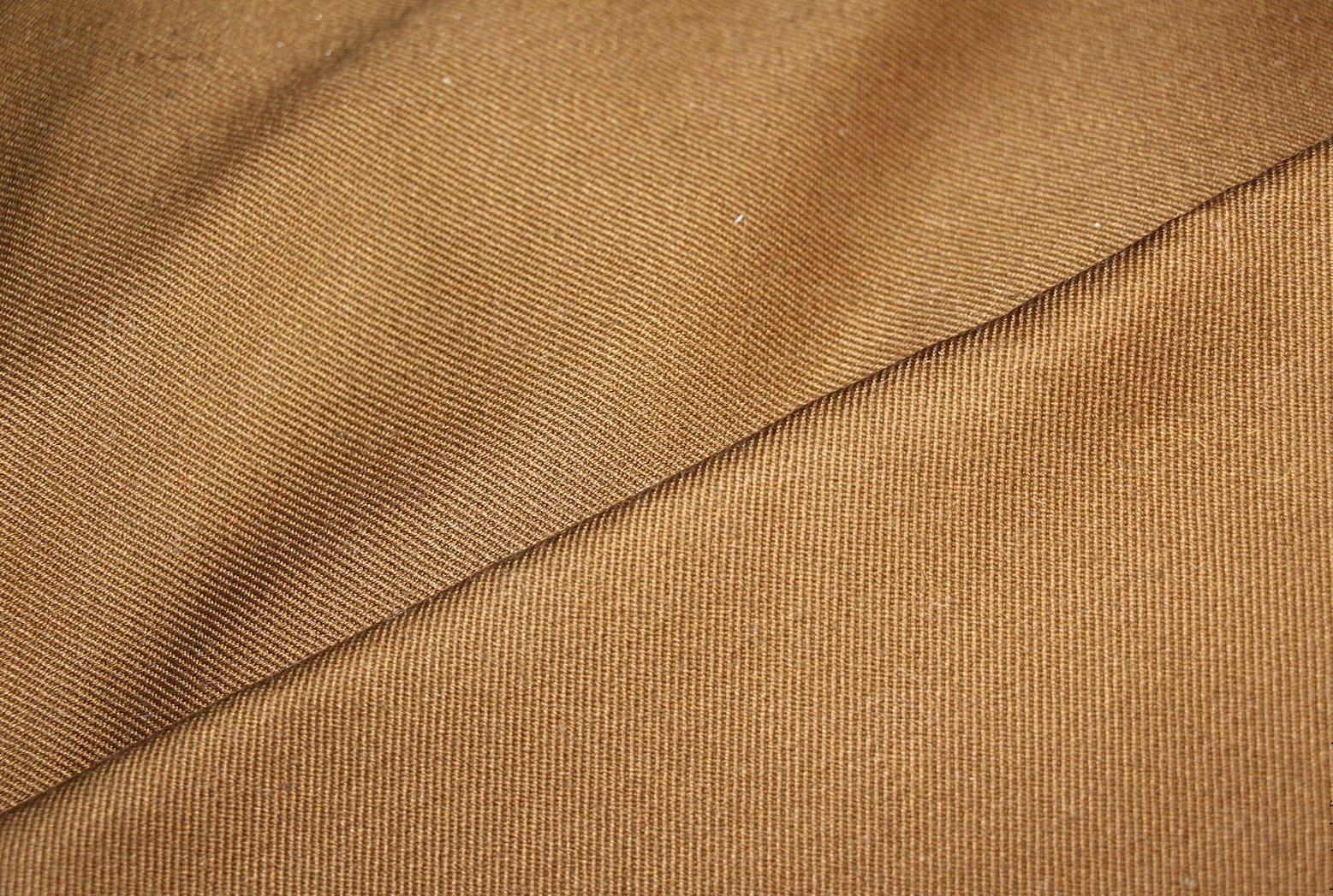
- Linen is an impractical fabric because it absorbs dirt well, can shrink after washing, and requires careful ironing. It has more of a decorative value - it is difficult to compete with it in terms of aesthetics. It perfectly complements the interior in the style of "Provence", "modern", "country". An apron made of such material will suit as a decoration for a hospitable hostess during a holiday or as a gift. The stores offer a wide range of colors of fabric with and without prints, at an affordable price.
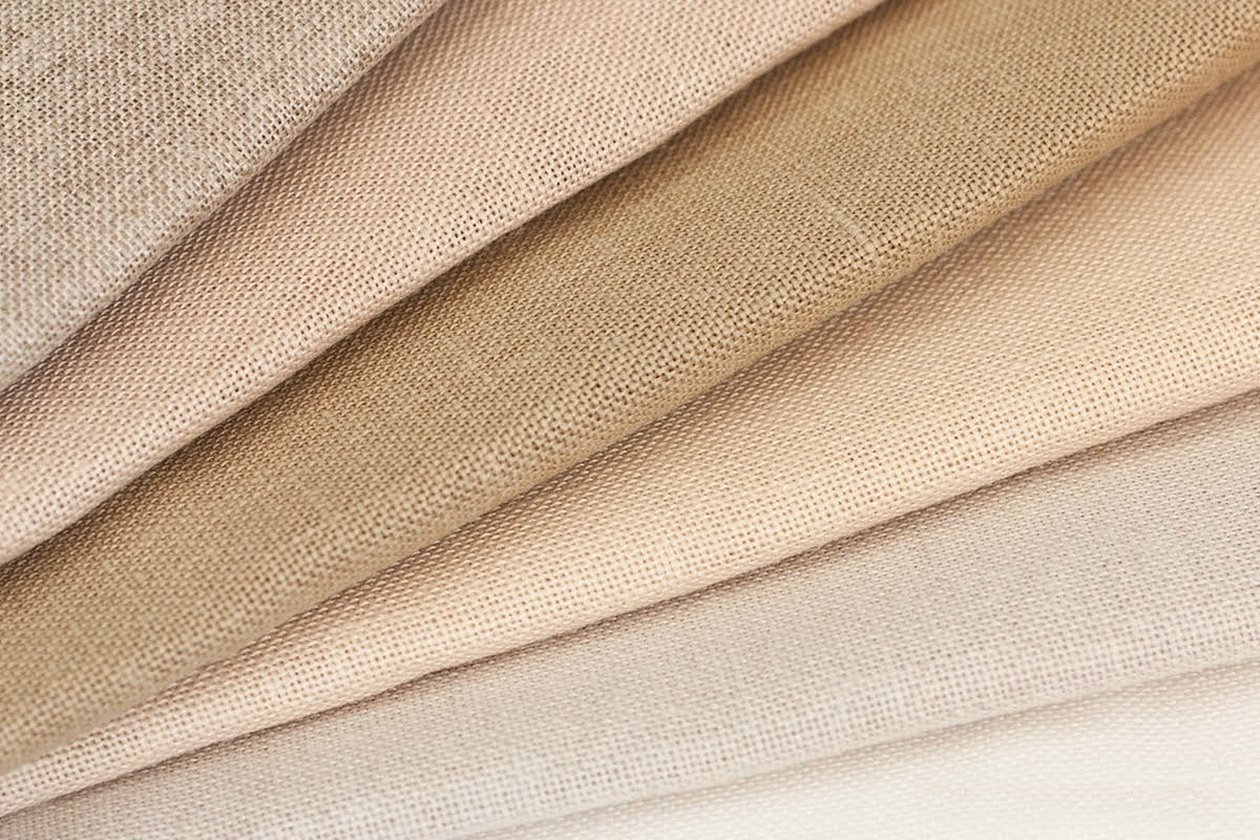
- Synthetics are inexpensive fabrics that are easy to wash and dry quickly. A housewife may have several items of this material in her arsenal for every day. It is only important to choose high-quality synthetics that will not fade or pill after the first wash.
- Teflon coated material is viscose, cotton, calico or synthetics, the surface of which is covered with a polymer layer. As a result of the treatment, the material is waterproof, does not absorb dirt, and reflects heat. A thing made of such material can be safely washed in a machine on any setting. Of the minuses - it is sold only in specialized fabric stores, the cost is relatively high.
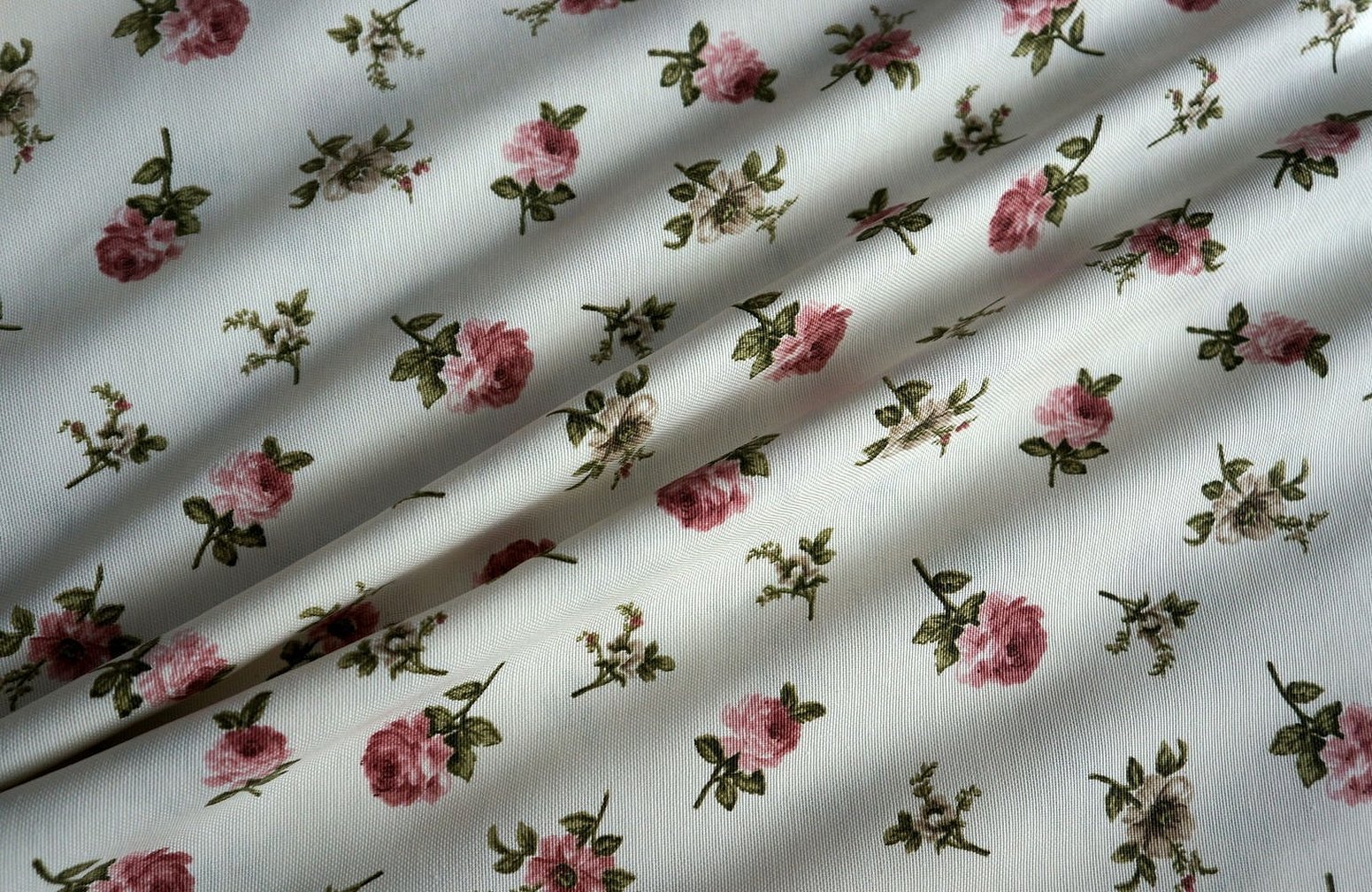
Please note! When choosing brightly colored fabric, you must ensure that it does not stain clothes and skin when exposed to high temperatures.
Quite often, needlewomen use old clothes for sewing products - denim, leather goods, robes. Thus, you can spend time interestingly and usefully, save money and create an exclusive thing.
Construction of the apron pattern
Before sewing any product, including an apron, it is necessary to make a sketch - a drawing of the future model or, as they call it, a pattern. It is created according to all the measurements taken from the figure. The product will be created according to the finished sketch in the future.
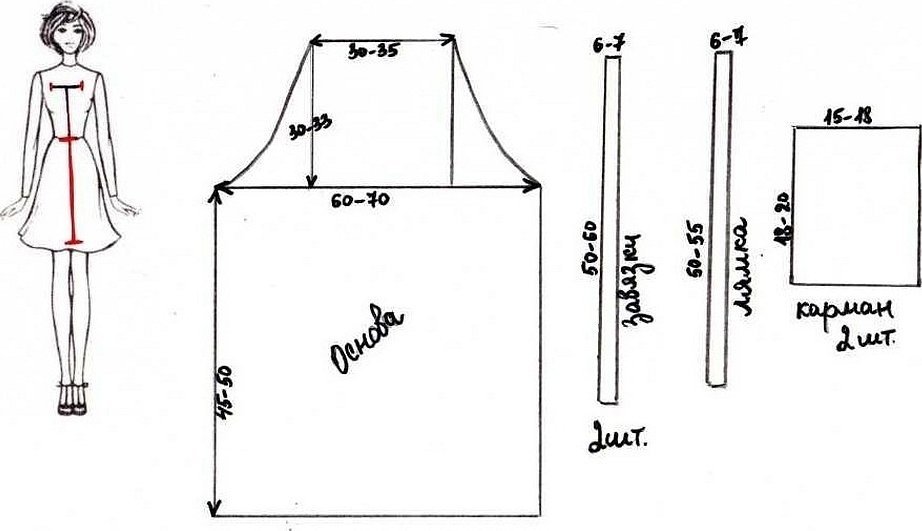
Beginner needlewomen will ask: "How do I make a pattern for a kitchen apron?" Everything is quite simple. An example of constructing a pattern with a bib is presented below.
Before starting work, you need to prepare materials and tools:
- measuring tape;
- paper for patterns – newspaper, millimeter tracing paper;
- scissors;
- threads, pins;
- fabric and decorative elements for sewing an apron.
The technology of constructing a pattern step by step:
- They measure the hip circumference, the size of the product from the waist to the bottom, the height of the chest part from the waist and the width.
- The paper is folded in half. A rectangle is drawn, the side of which is equal to the length of the product, and the bottom or top is a quarter of the hip circumference.
- The chest piece is made using the same principle. Fold the paper in half and draw a rectangle. The side is equal to the height of the piece, and the bottom or top is half the width of the chest piece. The sides can have smooth concave cuts.
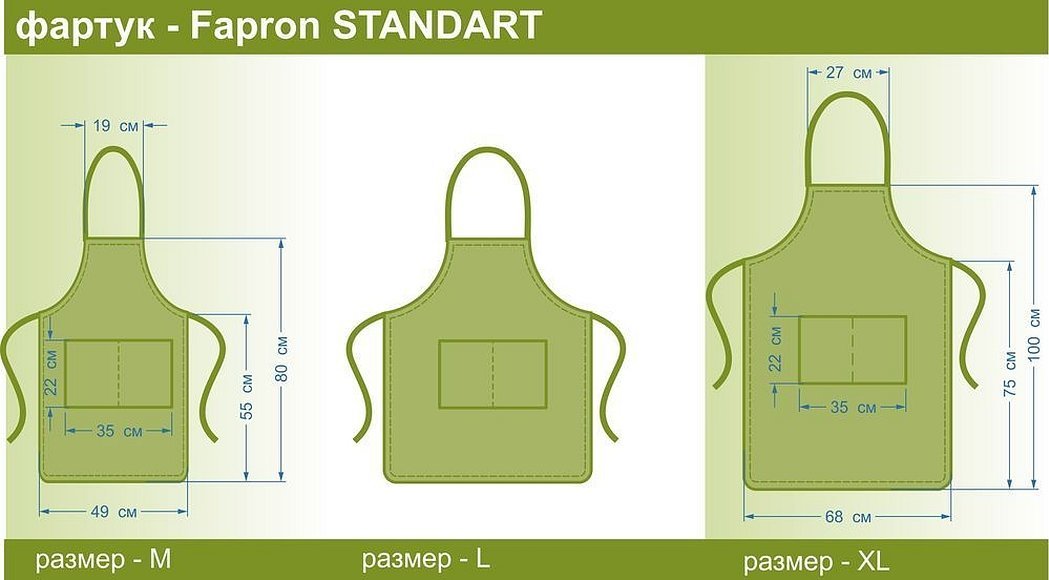
- For the paper belt, make 2 pieces 1.5 m long and 5 cm wide; for the neck straps, make 2 strips 60 cm long and 9 cm wide.
- All the drawn details are cut out and copied onto the fabric using a fabric marker or chalk. The grain lines on the patterns should match, with the pattern facing up.
Important! When creating a pattern, do not forget about seam allowances, 1.5–2 cm on each side.
Instructions on how to sew a kitchen apron
You can sew an apron with your own hands in a couple of hours if you strictly follow the instructions for its manufacture. Below are kitchen aprons with and without patterns that can be made at home.
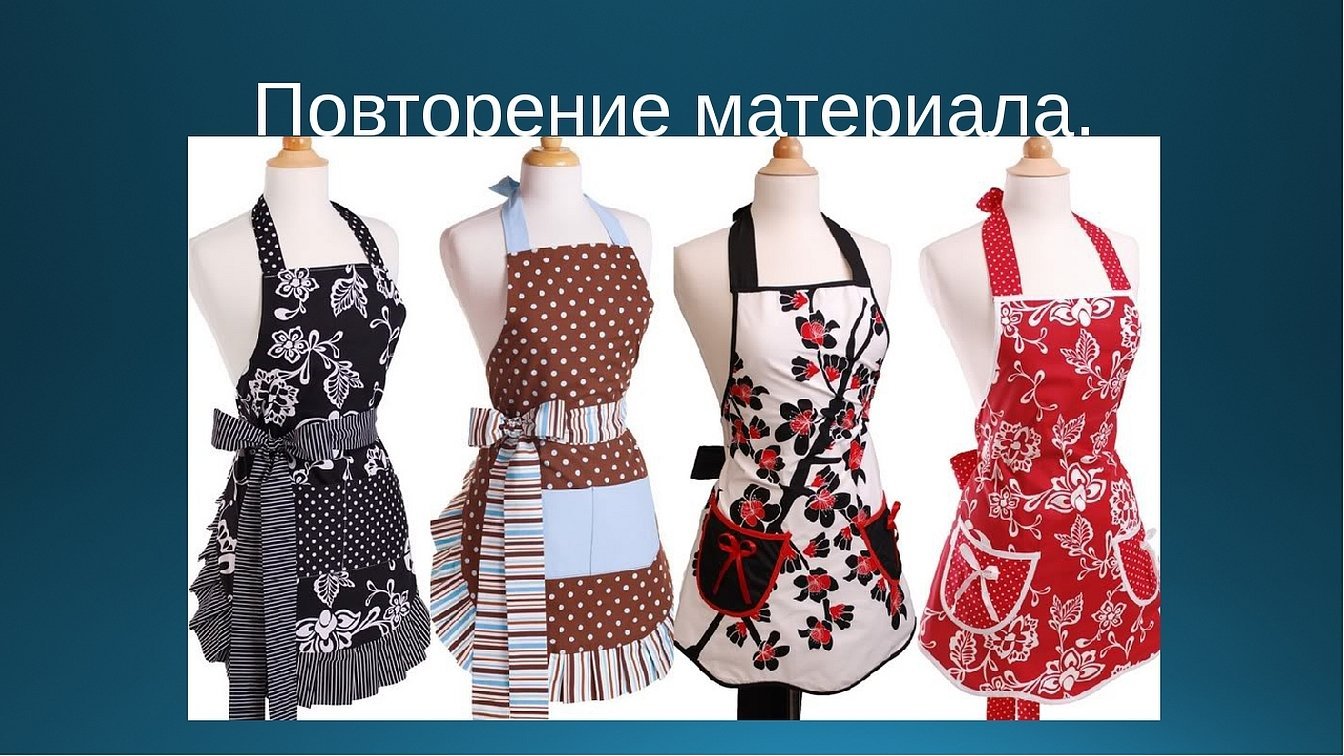
Aprons with applique for children
Housewives with children especially like to decorate products with appliques. As a basis, take a straight-cut apron in light shades so that the pattern stands out. Iron-on appliques can be purchased in large clothing stores or online. Patchwork pieces of fabric are also suitable for decoration.
For boys, choose images of construction elements, ships, planes, tanks. For children's aprons for girls - pictures with bows, butterflies, animals. Aprons with Japanese flowers, such as sakura and chrysanthemum, look especially delicate.
Please note! You can organize separate lessons with children on decorating aprons with appliques.
Aprons in a delicate shabby chic style
These are light, elegant aprons of a simple cut with lace trim and flowers. They are made of cotton or linen fabrics. Pastel shades are more common in the style. Pink or blue colors are used for accents.
To create a product in the shabby chic style, you need to sew a straight-cut apron using a pattern and decorate it with satin stitch, beads, ruffles, and lace.
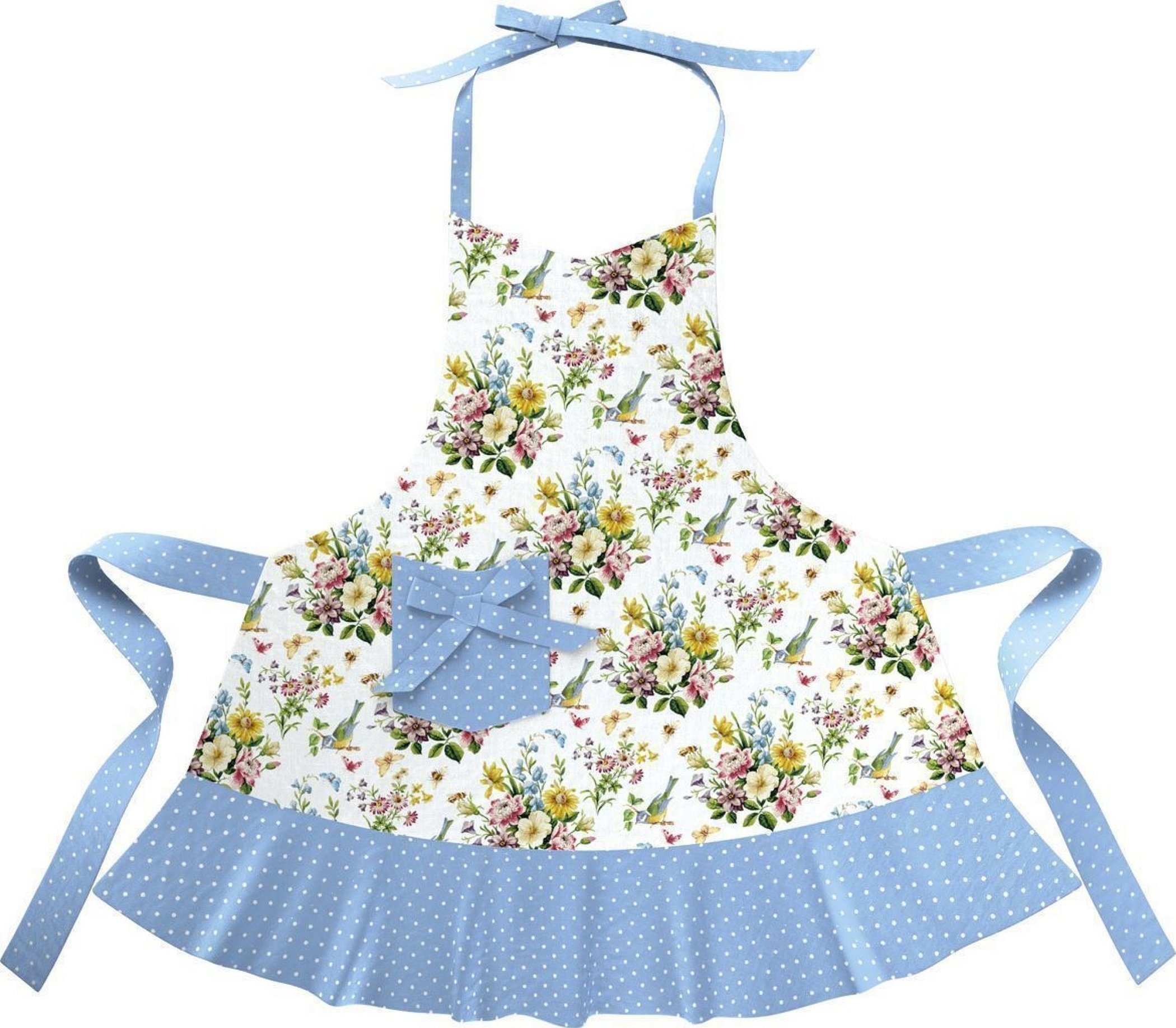
Aprons from old jeans
Old jeans are used to sew the product. The front part of the top of the trousers without side seams is cut out. The back part of the trousers is ripped open. A bib is cut out from the part with a pocket (the pocket should be in the center).
The lower part of the detail is increased by 1.5 cm for the seam. A bias binding is made 3 cm wide and the open cuts of the chest part are sewn. If desired, a matching applique is sewn onto the pocket. The finished details are sewn together. Ties made from strips are sewn onto the belt and the upper part.

Elegant aprons for the holidays
Festive apron models are the most beloved. They are usually made for a special occasion or as a gift. Usually, festive aprons are sewn from cotton or linen fabric. Lace, guipure ribbons and bows are used for decoration.
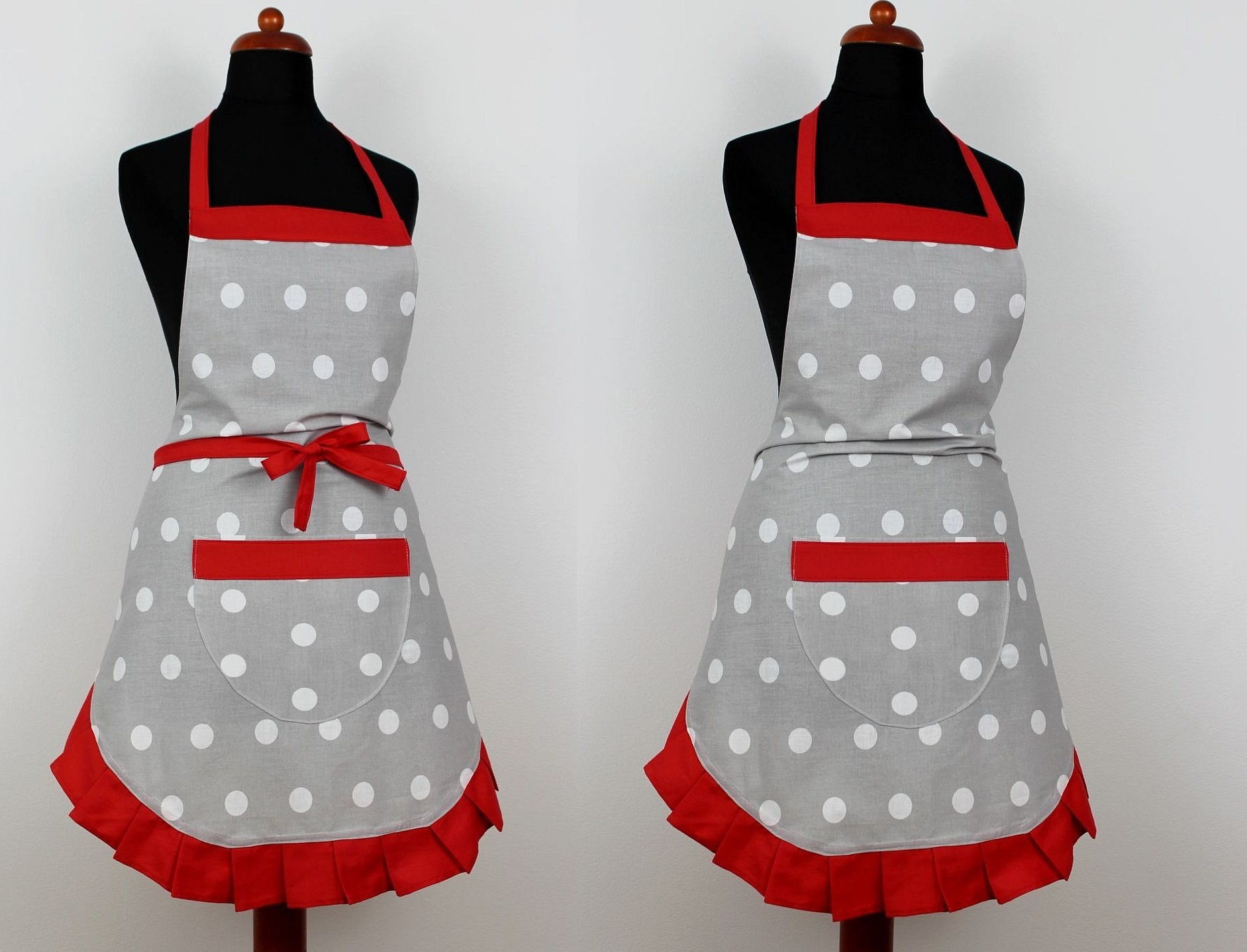
Step-by-step instructions on how to sew a festive apron:
- Fold the fabric in half, right side inward. Measure half the circumference in the corner. Draw a smooth line.
- Place marks at a distance of 45 cm from the line and connect them with a smooth line.
- Round off the bottom corners of the hem.
- Finish the hem with lace.
- Cut out a rectangle 35 cm long and 25 cm wide. Round off the side edges by cutting inwards. Finish three sides with lace.
- Cut out two strips 1.5 meters long and 5 cm wide. Connect both parts of the belt to the bottom of the garment and the bib.
- Ties. Cut out two strips 50–60 cm long and 9 cm wide. Attach the sewn straps to the top of the garment.
Apron from a men's shirt
Making an apron from an old man's shirt is easy. If the man's shirt is large, several aprons can be made from it. The ribbon can be made from the sleeves.
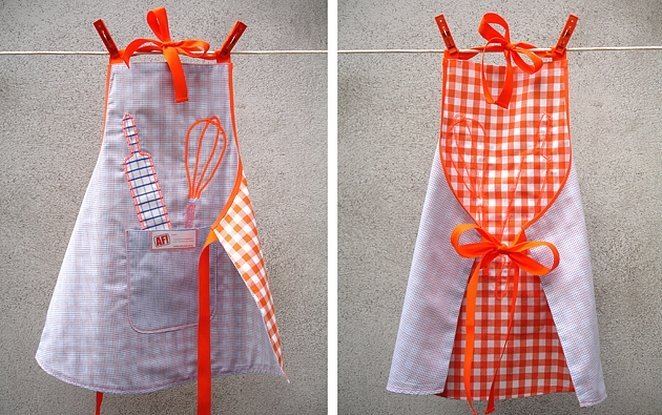
The manufacturing process takes place in 7 stages:
- Lay the shirt out on the table.
- Place a point on the shoulder seam, 3 cm from the point where the shoulder seam and neckline join.
- Place the next point on the side seam, 7–10 cm from the bottom point of the armhole.
- Connect all the dots.
- Cut out the pattern along the side seams along the drawn lines and behind the collar, leaving 2 cm.
- Finish all edges with bias binding or a hem stitch.
Non-marking polyethylene aprons
It is convenient to clean in polyethylene aprons. They are durable and have protection against chemicals. In the kitchen, they are useful for cleaning the refrigerator, stove, microwave. Polyethylene aprons are made in the same way as fabric models.

Sewing a kitchen apron is a simple process that will take no more than 3-4 hours. But as a result, the hostess will receive not only a means of protection against any dirt, but also a stylish accessory. It complements the outfit and will effectively fit into the overall design of the kitchen.




